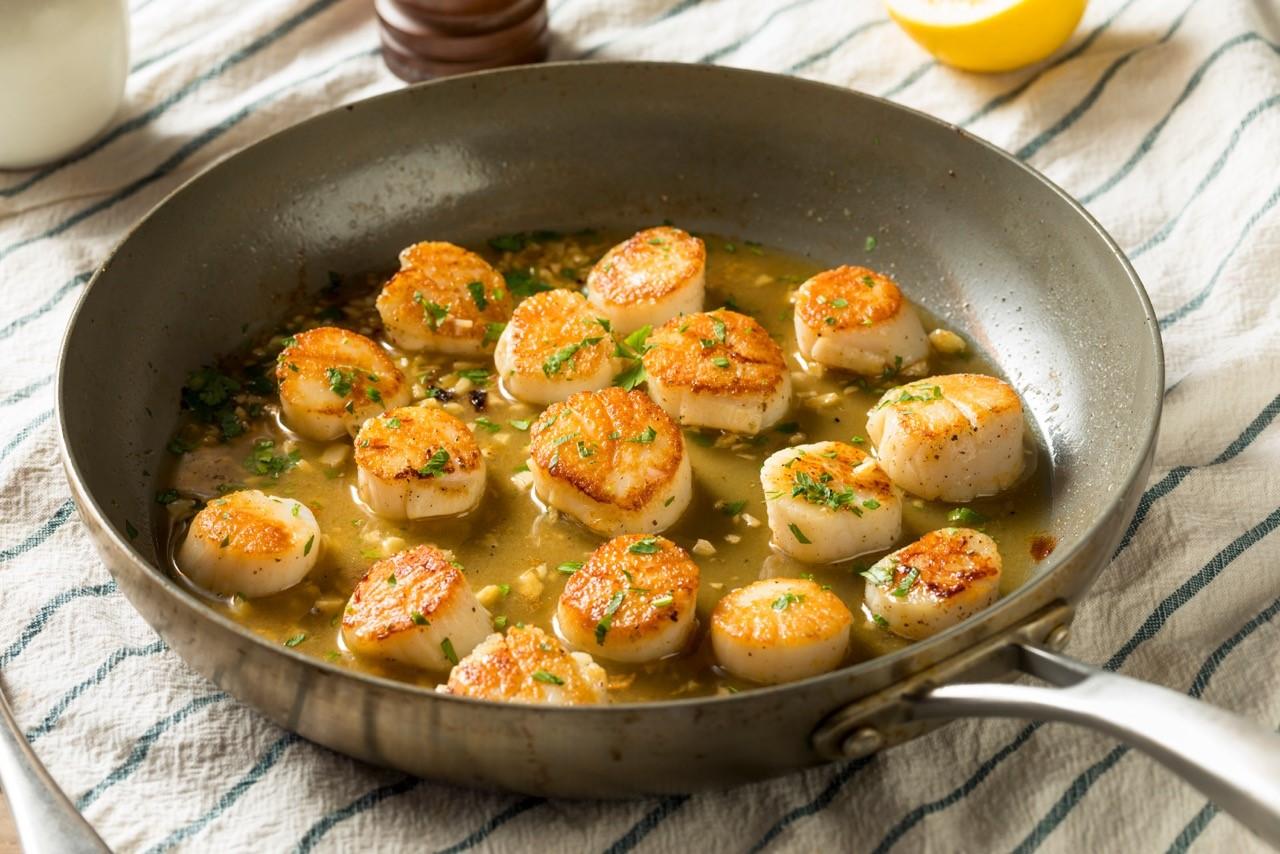In the seventies, every posh French restaurant would showcase wonderful scallops in all their glory in a dish called “coquilles St Jacques à la Parisienne”. It’s one of those fantastic recipes that have unfortunately fallen from favour in recent years and you rarely see on any modern restaurant menu these days.
I have to admit that I love and respect these old, classic dishes and, but also realise that many of my fellow chefs often laugh and look down their noses about the piped mashed potato around the edge of the shell, but I find it kind of cute, a little retro even. After all, this fluffy crusted border helps to hold in the sauce surrounding the scallop meat, adds a pleasing texture and, for heaven’s sake, you can’t go wrong with a gratin of seafood, luxuriously bubbling way with butter and cream in all its glory!
Scallops are still extremely popular. Put something with scallops on the menu and they always seem to sell. According to gastronomic critics, this deliciously meaty mollusc is the queen of the deep seas and from a cook’s point of view; these perfect little rounds of pure muscle could have been created just for the table. They are ever so versatile and can be cooked in so many different ways. They marry well with so many other flavours and they are also a portion control officers dream.
An expensive but delicious shellfish with a delicate taste, scallops have two fan-shaped shells which contain rounds of firm white flesh, sometimes with the edible cream and orange coral (or roe) attached. They can be steamed, fried or grilled but should be cooked gently and only for a very short time or their delicate flavour and texture will be spoiled. The trick to perfectly tender and juicy scallops is not to overcook them, which can make them dry and tough.
Scallops really come into their own when they are shown the heat of a hot frying pan. The oil or butter must be hot enough to create a crust, otherwise the scallops start to release their juices and start to boil. If you heat 1 teaspoon of butter and 3 teaspoons of olive oil (to prevent burning) in a large frying pan over medium-high heat. Add the scallops and, depending on their size, cook for 1-2 minutes each side or until light golden and just cooked through. Transfer to a plate. Season with salt and pepper. That’s it. Shellfish nirvana awaits.
Scallops can also be steamed with white wine; garlic and parsley as you would mussels, serve them with asparagus or wrap them in prosciutto and grill or fry for a few minutes. Scallops are also perfect when marinated in ceviche style dishes and for go well with Asian ingredients: try pan-frying them in oil with ginger and fresh coriander.
They’re also a good complement to hearty flavours such as bacon, chorizo, morcilla or watercress. In northern Spain tiny queen scallops called “Zamburiñas” are very popular. These are tender, buttery scallops native to the cold Atlantic around Galicia. They are most often served steamed, but are also widely available baked in the shell or cooked with local Albariño wine, parsley and garlic.
Scallops with albariño, garlic & Parsley
Ingredients
Serves 4
- 12 fresh scallops, shelled and corals removed
- 3 tbsp olive oil
- 2-3 garlic clove, roughly chopped
- 150ml Albariño (dry white wine)
- 2tbsp cream
- 75g chilled butter
- 2-3 tsp’s finely chopped fresh parsley
- A squeeze lemon juice
- Seasoning
Method
Heat the olive oil in a large non-stick frying pan. Place the prepared scallops in the hot pan and cook for a minute and a half on both sides.
Add the white wine, crushed garlic and cream. Bring to the boil and mix in the chilled butter and chopped fresh parsley. Season with salt and pepper and serve at once with a squeeze of lemon juice.


No comments
To be able to write a comment, you have to be registered and logged in
Currently there are no comments.